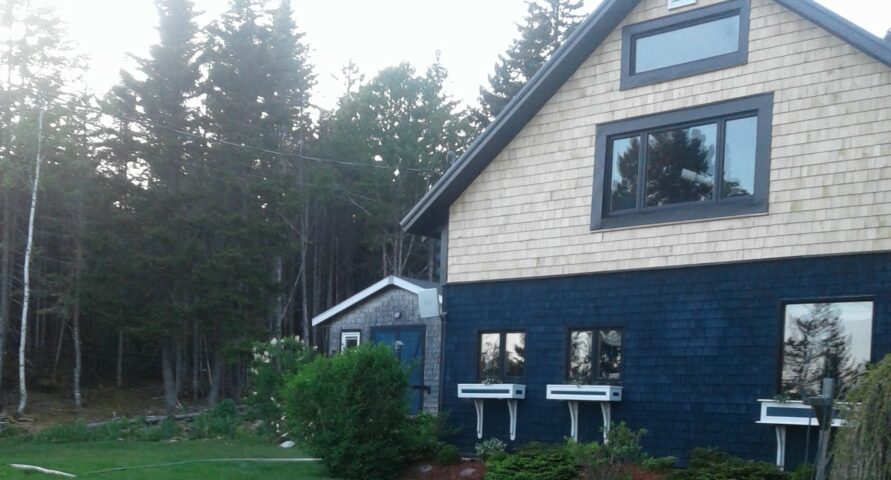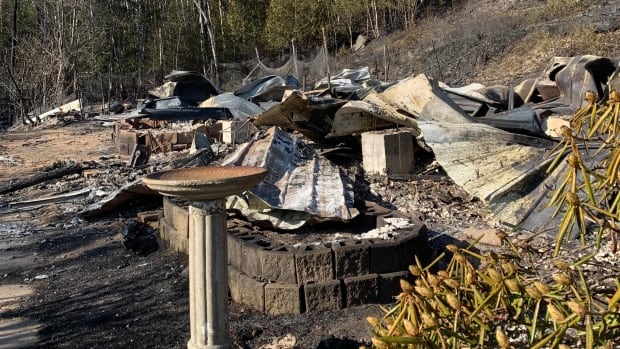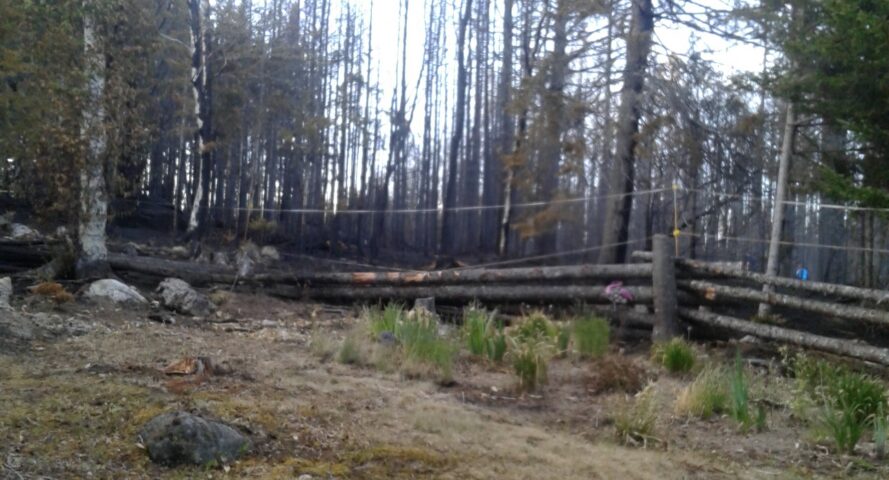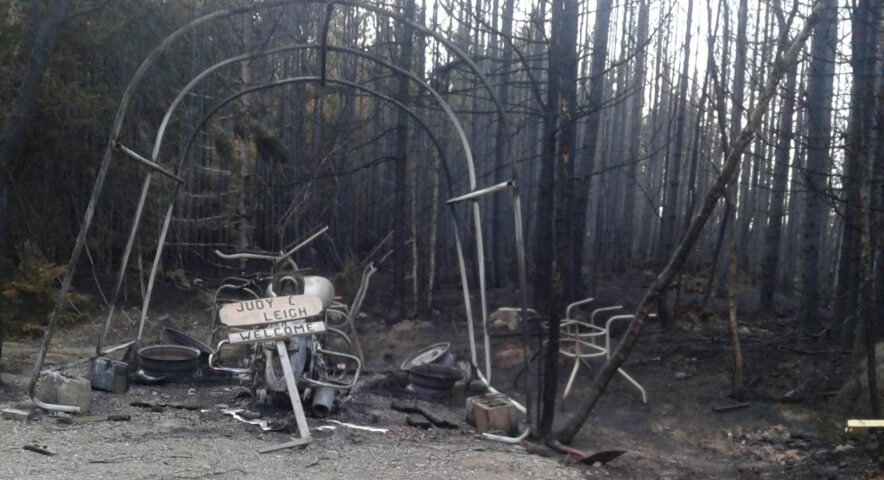Judy Johnson knew something was seriously wrong when a neighbour came speeding towards her home on Hwy. 127 near Saint Andrews on the afternoon of May 28, 2023.
“He said, ‘You’ve got to get out, you’ve got to get out!'” said Judy.
The neighbour warned Judy and her husband about a nearby wildfire that broke out after an ATV caught fire. The hot, dry conditions from a May heatwave meant it was spreading rapidly.
They quickly packed and left, unsure of what they might return to.
“I thought, ‘It’s just overnight — we’ll be back. It’s no big deal,'” said Judy, not knowing it would be three days before they would return.
An unprecedented summer
The summer of 2023 brought the growing threat of wildfires close to home. A total of 209 wildfires burned nearly 860 hectares of land across New Brunswick.
That includes 500 hectares ravaged by the Stein Lake fire that broke out in Charlotte County — the one that was near the Johnsons’ property.
Remarkably, while other properties suffered significant damage from the blaze, the home was spared, save for a motorcycle.

“We were lucky, we were unbelievably lucky,” Judy said.
She credited the fortunate outcome to a firebreak her husband had created around their property the year before. She said it helped save the home along with the efforts of firefighters and water bombers.
“It was the fire department, the firebreak and pure dumb luck,” she said. “Even though some of my porch furniture had burns in the upholstery, somehow or another, the whole place managed to be saved.”
Devastating loss
However, others in the area were not as fortunate.
Annie Stewart’s parents lost their cedar-built home in Boabec, which her father built when she was a child.
“The fire started in the morning, but it wasn’t until the afternoon that they began evacuating people,” Annie said. “My parents didn’t know because they weren’t home, but they were told to evacuate when they got home.”

Annie’s parents could only save a few belongings despite their best efforts.
They then stood on Kerrs Ridge Road, watching the house burn“The house was pretty old, and the cedar was old, so it went up quick,” Annie said. “My mom was beside herself, and when she called me, I was beside myself.”
Rebuilding
In the aftermath, the community rallied to support the Stewarts. With no insurance to cover the loss, Annie and her boyfriend launched a GoFundMe campaign.

“I also got donations from local churches and some local stores as well,” she said.
With the help, the Stewarts were able to rebuild. They took precautions to mitigate future fire risks, including removing trees around the house and clearing more land to create a buffer zone.
Annie emphasized the importance of being prepared for similar emergencies.
“My mom wasn’t expecting not to go back to her house, so she only grabbed two items of clothing plus the one she was wearing, and my Dad grabbed a whole laundry basket,” she said.
“If there was ever a time we had to evacuate, we’d want to make sure we had all the essentials we needed.”
The climate connection
Wildfires are becoming more frequent and severe in New Brunswick and across Canada, an alarming trend driven by climate change. Climate change has significantly increased the likelihood of record-breaking high temperatures, low humidity and rapid snowmelt—all factors that fueled the intense wildfires in Eastern Canada in 2023.
Across the country, nearly 11,000 square kilometres burned in more than 56,580 fires in 2023. So far in 2024, more than 22,800 square kilometres have been scorched by over 3,700 fires, according to the National Interagency Fire Center.
“It seems to be not if, but when,” Judy said. “Be prepared.”
Preparedness involves creating defensible spaces around properties, having evacuation plans and staying informed about fire conditions.
For Judy, creating a firebreak by removing coniferous trees around her property saved her home. Annie’s parents have also cleared areas around their rebuilt home that could fuel flames.
Judy also noted municipalities need to be more prepared for the ever-increasing threat of wildfires, including managing nearby forests to reduce the danger.
“I really think given the (changing) climate, that all kinds of places need to start thinking about what to do,” said Judy.

Judy also noted municipalities need to be more prepared for the ever-increasing threat of wildfires, including managing nearby forests to reduce the danger.
“I really think given the (changing) climate, that all kinds of places need to start thinking about what to do,” said Judy.
Taking action
But beyond individual efforts, combatting wildfires requires collective action in the fight against climate change. Stopping fossil fuel pollution, holding major polluters accountable and investing in renewable energy are crucial steps to preventing these unnatural disasters.
Canada’s contribution to fossil fuel pollution is significant. The country ranks in the top 10 for climate pollution, second for per-capita emissions and first for the world for most cumulative emissions by population. The climate crisis is a fossil fuel pollution crisis, with carbon dioxide emissions from burning fossil fuels accounting for about 91 per cent of worldwide emissions in 2022.
“Wildfires will only get worse if we keep burning fossil fuels,” said Dr. Moe Qureshi, the Conservation Council’s director of climate research and policy. “Climate change is harming us directly, jeopardizing our health and burning our homes and communities. Governments need to respond to the concerns of millions of Canadians who want to hold big polluters accountable for this growing threat.”
Wildfires are quickly becoming more frequent and severe, threatening people across Canada. Visit our webpage to learn more about wildfires, how to prevent them and how to prepare for emergencies.

